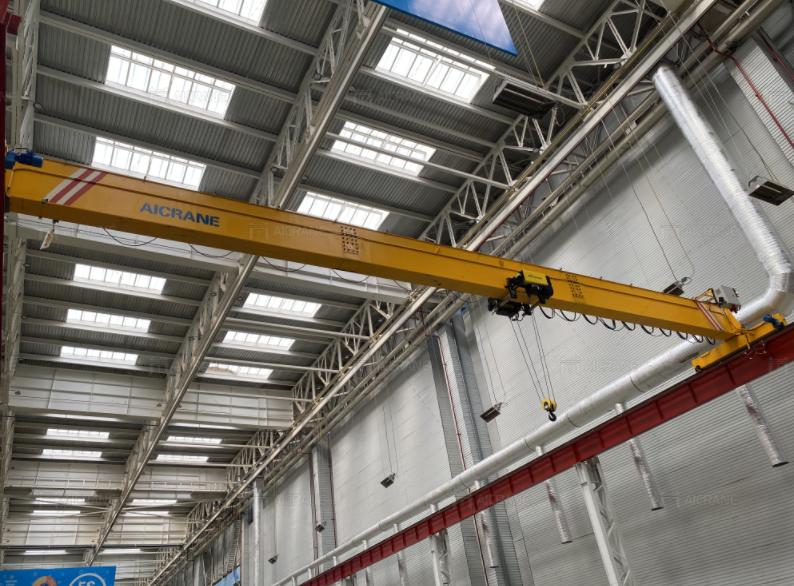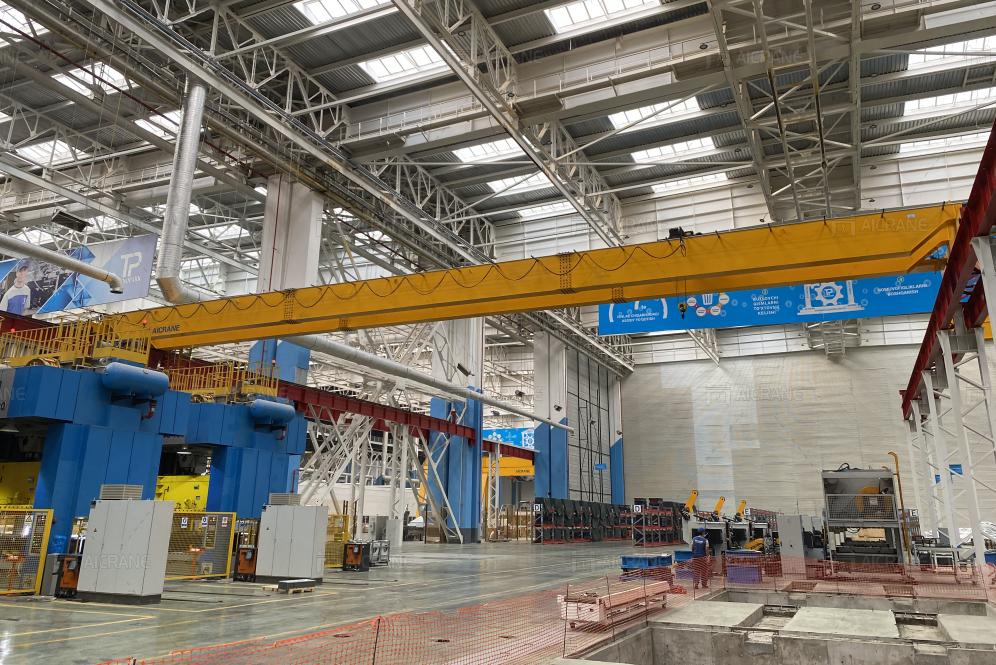How to Choose the Right Type of EOT Crane for Your Manufacturing Facility
Electric Overhead Traveling (EOT) cranes are essential equipment in many manufacturing facilities. These cranes are used to lift and move heavy materials, equipment, and goods within the facility, streamlining operations and enhancing efficiency. However, choosing the right type of EOT crane for your specific requirements is crucial to optimize production and ensure safety.
The selection process can seem daunting, given the various types of EOT cranes available, each designed for specific lifting tasks. This article will explore the factors to consider when selecting the right type of EOT crane for your manufacturing facility, helping you make an informed decision.

1. Understand the Types of EOT Cranes
The first step in choosing the right crane is understanding the different EOT crane types available. EOT cranes are typically categorized based on their design, capacity, and application. The most common types include:
- Single Girder EOT Cranes: These are ideal for lighter lifting tasks and are commonly used for smaller facilities or applications that require less lifting capacity. They are efficient, cost-effective, and offer a compact design that allows for easy maneuverability in tight spaces.
- Double Girder EOT Cranes: These cranes are designed for heavy-duty applications, offering higher lifting capacities and a more stable and durable structure. Double girder cranes are suitable for larger facilities and can handle more challenging lifting tasks, making them ideal for industries such as steel mills, heavy manufacturing, and shipyards.
- European Standard Cranes: European-style EOT cranes are designed to meet strict European standards for safety and performance. These cranes offer a compact design, lower headroom requirements, and are energy-efficient. They are often used in facilities where space optimization and energy efficiency are top priorities.
- Explosion-Proof EOT Cranes: These explosion proof cranes are specially designed for use in hazardous environments, such as chemical plants, oil refineries, or coal mines, where explosive gases or dust may be present. They are built to meet specific safety standards and prevent any sparks or heat that could trigger an explosion.
2. Determine the Lifting Capacity
Lifting capacity is one of the most critical factors in selecting an EOT crane. It is essential to know the maximum weight the crane will need to lift regularly in your facility. Overloading the crane can lead to damage to the crane itself, the items being lifted, and pose significant safety risks.
To determine the appropriate lifting capacity, consider the following:
- Weight of Materials: Calculate the weight of the materials or equipment your facility handles regularly. Be sure to account for occasional overloads or unexpected tasks that may require higher lifting capacities.
- Future Growth: Consider any potential future increases in production, which may require a crane with a higher capacity. It's a good idea to plan for expansion by choosing a crane that can accommodate future needs.
- Safety Margin: A good rule of thumb is to select a crane with a lifting capacity of at least 20-30% more than the maximum load you expect to handle. This provides a safety margin for unforeseen circumstances.

3. Consider the Span and Lifting Height
The span and lifting height are vital parameters in determining the crane's performance. These measurements determine how far the crane can travel across the workspace and how high it can lift items.
- Span: The span is the distance between the crane's rails and dictates the width of the area the crane can cover. The span should be sufficient to cover the entire width of the area where materials or products need to be moved. When measuring the span, make sure to consider any obstructions, such as walls or machines, that may limit the crane's movement.
- Lifting Height: The lifting height is the maximum height the crane's hoist can reach. Depending on the materials or products you need to lift, the lifting height should be appropriate. For instance, if your manufacturing process involves stacking products or materials at great heights, you'll need a crane with a higher lifting height.
4. Evaluate the Duty Cycle
The duty cycle refers to how frequently the crane will be used within a given period. Cranes are designed with different duty cycles, which indicate how much work the crane can handle without overheating or becoming damaged. A crane that is overworked beyond its duty cycle may break down prematurely or require frequent maintenance.
- Class of Service: EOT cranes come with different classes of service, ranging from light to heavy-duty. The classification is based on how often the crane will operate and how much load it will handle. For instance:
- Class A (Light Duty): Used for occasional lifting with minimal stress.
- Class B (Medium Duty): Used for moderate lifting applications with a balance of load and frequency.
- Class C (Heavy Duty): Used for frequent lifting with heavy loads, requiring robust cranes built for durability.
- Class D (Severe Duty): Used for continuous, demanding operations, typically found in steel mills or heavy industries.
5. Space Considerations and Installation Requirements
Space within the facility plays a significant role in crane selection. If your facility has limited space, you may need a compact crane that can maneuver easily in tight areas. For instance, single girder cranes offer a more compact design and are ideal for smaller manufacturing spaces.
Other space-related factors to consider include:
- Headroom: Cranes require sufficient headroom to operate efficiently. If your facility has low ceilings, a low-headroom crane or an under-slung crane may be ideal.
- Railway Setup: Ensure that the crane rails can be installed in the intended area and that the supporting structure is designed to handle the crane's load. For heavy-duty applications, a robust rail system will be required to handle the strain.
6. Control Options
Control systems are essential for smooth and efficient crane operations. Different cranes offer different control methods, including:
- Ground Control: This control method involves operating the crane from a control panel located on the ground near the crane. It is suitable for less complex operations where the crane operator needs to be close to the crane but not necessarily in the crane's immediate vicinity.
- Cabin Control: For larger cranes or more complex operations, cabin control provides the crane operator with an enclosed cabin to control the crane from a higher vantage point. This is ideal for applications that require precise control or when the crane is operated in high-traffic areas.
- Remote Control: Remote control systems allow crane operators to control the crane from a distance. These are particularly useful for applications where the crane operator must stay away from hazardous areas or when the crane is operating in tight spaces.
7. Maintenance and After-Sales Support
Regular maintenance is essential to ensure the crane's long-term reliability and safety. Consider the following when selecting your EOT crane:
- Service Life: Choose a crane built with durable components and designed for long service life.
- Maintenance Requirements: Select a crane that is easy to maintain, with readily available spare parts and a manufacturer that offers a comprehensive after-sales service package.
- Manufacturer’s Reputation: Look for a reputable crane manufacturer with a strong track record in providing maintenance support, spare parts, and on-site service.
8. Budget and Cost of Ownership
Finally, consider your budget. The initial cost of the crane is important, but it’s equally crucial to account for the long-term cost of ownership. This includes the cost of maintenance, spare parts, electricity consumption, and the potential for downtime. Choosing a high-quality crane from a reputable manufacturer may have a higher initial cost but can lead to savings over time due to fewer repairs and a longer lifespan.
Conclusion
Selecting the right type of EOT crane for your manufacturing facility requires careful consideration of several factors, including the crane’s type, lifting capacity, span, duty cycle, and installation requirements. By thoroughly evaluating your facility’s needs and consulting with experienced crane manufacturers, you can ensure that you choose a crane that enhances productivity, improves safety, and supports the growth of your business.
A well-chosen EOT crane can make a significant difference in your manufacturing operations, improving efficiency, reducing downtime, and ensuring the smooth movement of materials within your facility.